Discover Premier Surfing Destinations in the Maldives
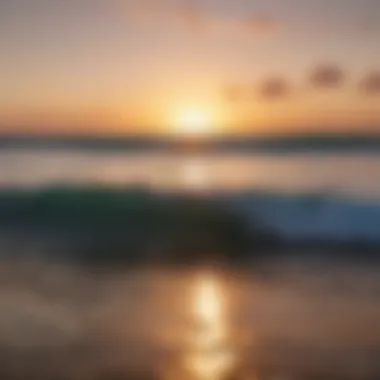
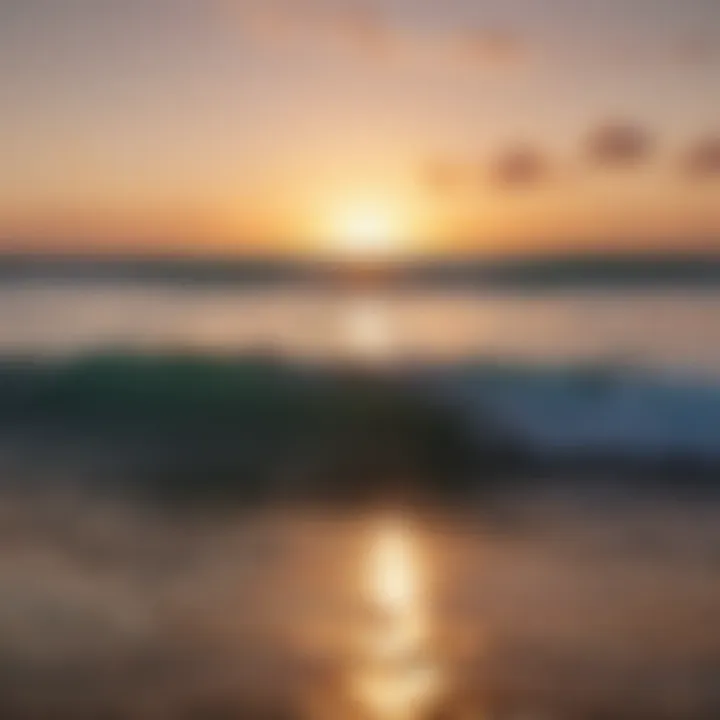
Intro
The Maldives is not just a tropical paradise; it's a surfer's dream come true. Comprising over a thousand coral islands, this archipelago boasts some of the best surf spots in the world. Whether you are a seasoned pro or just starting out, the unique geographical layout of the Maldives creates a striking diversity of waves. In this article, we will guide you through the cream of the crop when it comes to surf destinations in the Maldives, so you can ride the waves confidently amidst stunning backdrops.
Keeping in mind the rising popularity of surfing in these crystal-clear waters, we’ll also touch upon essential gear, techniques, safety practices, and cultural nuances of surf life in the Maldives. From logistical planning, including where to stay and how to get around, to the best time to visit for optimal conditions, we aim to equip you with everything you need for an unforgettable surfing experience.
As they say, "If you don’t know where you’re headed, you’ll end up wherever you go." So let’s set the scene for your surf adventure!
Gear Recommendations
To make the most of your surfing trip in the Maldives, having the right equipment is paramount. Surfing is not just about skill; it's also significantly about using the right gear. Here’s what you need to bring along to ensure your session goes smoothly.
Essential Gear for Beginners
- Surfboard: A soft-top longboard is a good choice for beginners, providing more stability on the waves.
- Leash: This keeps your board attached to you in case you take a tumble. Safety first!
- Wetsuit: Depending on the season, a shorty or a full wetsuit may be necessary; the water is warm but can get a bit chillier at times.
- Rash Guard: Protects your skin and provides extra sun protection, which is essential under the Maldivian sun.
Advanced Equipment for Professionals
- High-Performance Board: A thruster or a shortboard will give you the maneuverability needed to tackle bigger waves.
- Fins: Experiment with different fin setups to find the one that best suits your style and the wave conditions.
- Wave-Specific Wetsuit: In colder months, an optimized wetsuit thickness can aid performance without compromising warmth.
- Hydration Packs: Staying hydrated is crucial when surfing for long hours under the sun.
Techniques and Tips
Whether you're just learning the ropes or fine-tuning your skills, the right techniques make a world of difference on those Maldivian waves.
Skill Improvement Strategies
- Practice Paddling: Develop upper body strength to help with paddling into waves. Strong paddling is like having your own secret weapon.
- Foot Placement: Make sure your feet land wide and flat upon popping up; this sets a solid base for balance.
- Wave Selection: Understand how to read waves. Choosing the right one can turn a mediocre session into an epic ride.
Safety Practices and Guidelines
- Know Your Comfort Zone: If a wave feels too daunting, don’t paddle out. It’s okay to stick to smaller swells.
- Respect Local Customs: The Maldives has its unique culture and respecting this off the water translates to harmony on it.
- Buddy System: Always surf with a partner, especially if you are not familiar with the waters.
"In the end, it’s not the waves you conquer but yourself."
Surfing is as much about wisdom as it is about skill.
As we explore specific surf spots in the Maldives, keep these recommendations at the forefront. Prepare yourself for an adventure that awaits in each wave. The sea is calling, and it's time to answer.
Preface to Surfing in the Maldives
Surfing in the Maldives is not just about catching waves; it’s a whole experience that intertwines adventure, culture, and serenity. As an archipelago known for its striking blue waters and stunning coral reefs, the Maldives has emerged as a premier surf destination. This introduction sets the stage by highlighting what makes these islands a captivating choice for both beginners and seasoned surfers alike.
The allure of the Maldives extends beyond picturesque scenery. Surfers flock here for a chance to engage with nature while navigating some of the most favorable conditions in the world. The warm waters, consistent swells, and variety of breaks found throughout the atolls ensure that there’s something for everyone, regardless of skill level. It's not merely surfing; it’s about connecting with the ocean and the environment which enhances one's surfing journey.
Overview of the Maldives as a Surf Destination
The Maldives consists of over a thousand islands, many of which are scattered across the Indian Ocean. Each island holds its own unique charm and surf spot. One of the notable features is the seasonal variation in wave quality—characterized largely by the trade winds and monsoon seasons. From the later half of April through October, surfers can savor some of the best waves, typically with less crowding.
Moreover, many surf spots are accessible only by boat, making the adventure even more thrilling. Surfers can enjoy uncrowded waves that sometimes lead to more intimate surf sessions with nature. With local shops offering rentals and classes, surfers from across the globe can easily find their footing.
In essence, the Maldives as a surf destination is not simply defined by its waves, but by its ability to create a harmonious environment where surfing becomes an extension of the natural beauty that surrounds it.
Historical Context of Surfing in the Maldives
Surfing in the Maldives has a rich and colorful history. Initially, surfing was introduced in the 1970s when a handful of travelers and surfers discovered the islands. The early days were marked by a sense of exploration, as surfers sought out secret spots that had never seen a board before. The isolation of some local islands meant that those first few surfers enjoyed waves without the crowds that plague more established destinations.
Over the years, surfing grew in popularity, attracting international attention. Local surfers began to emerge, learning from their visitors and embracing this sport. The transition was not only about waves, but also about respect for the ocean and understanding the local culture surrounding surfing.
Today, surfing in the Maldives has evolved into a well-recognized sport, with international surf competitions being held, putting the Maldives on the global surfing map. Surfing schools and camps have sprouted throughout the country, enabling a new generation of surfers to emerge, thus enriching the Maldives surfing heritage even further.
The intertwining of local traditions and the surging wave culture enhances the identity of the Maldives as a unique surf destination. Understanding the history is crucial; it highlights the journey from exploration to establishment, which ultimately shapes the modern-day surf scene we're familiar with today.
"Surfing isn’t just a sport; it’s a way of life that connects islands, individuals, and cultures around the globe."
The Maldives stands as a testament to this truth, celebrating a shared dedication to the surf lifestyle, and making it a must-visit for any surf enthusiast.
Identifying Ideal Surf Seasons
Understanding the best times to surf in the Maldives is crucial for making the most out of your trip. The surf conditions vary significantly throughout the year, influenced largely by the monsoon seasons. This knowledge not only ensures you hit the water when the waves are at their peak but also helps in avoiding less favorable conditions that could dampen your experience. Knowing when to go reflects your commitment to surf culture and respect for local practices, enhancing your overall adventure in this island paradise.
Understanding the Monsoon Seasons
The Maldives experiences two main monsoon seasons: the southwest monsoon from May to October and the northeast monsoon from November to April. Each of these seasons impacts wave quality and consistency differently.
- Southwest Monsoon (May - October): During this time, the ocean tends to produce larger swells, making it the most popular season for serious surfers. The winds can create challenging conditions, but for those who are up for it, this is when the big waves roll in. Expect some rain, but it often comes and goes quickly, so don’t let it scare you off.
- Northeast Monsoon (November - April): This period generally offers gentler and smaller waves, ideal for beginners or those looking for a more laid-back surf experience. The weather is also drier and the winds are milder, making for comfortable conditions both in and out of the water.
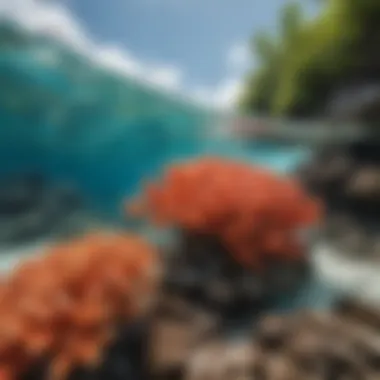
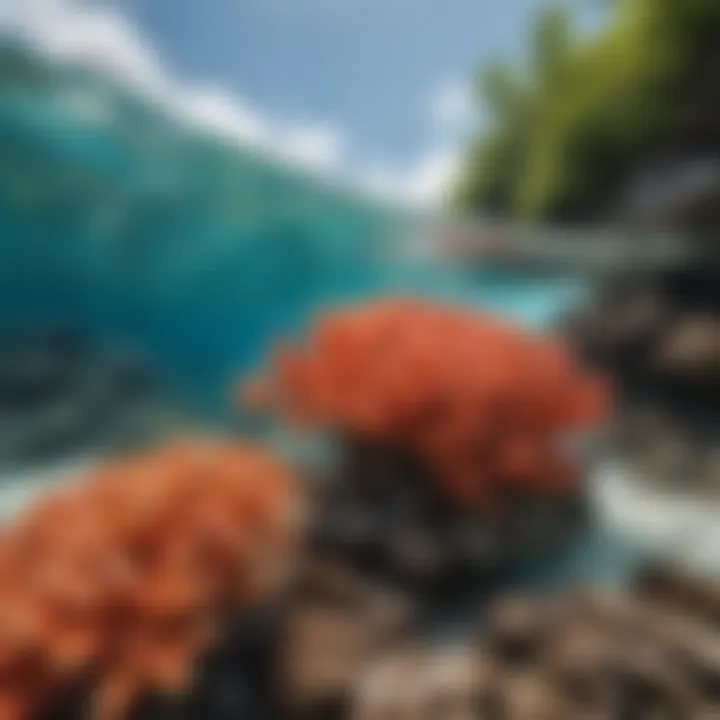
The nuances of these winds and swells create unique conditions at different surf spots. Hence, it’s worthwhile to research the local spots' characteristics during these seasons, tailoring your trip to catch the best waves.
Best Time for Consistent Waves
When it comes to catching consistent waves, the months of June through September are often hailed as the prime time. Here’s a closer look at what to expect:
- June: The beginning of the southwest monsoon brings rising swells. It’s often less crowded as many surfers wait for later in the year, meaning you might just find your own little slice of paradise.
- July-August: These months can be seen as a surfer’s delight. The swells can reach their peak, with the waves flowing smoothly for longer rides. July is known for its magical conditions at spots like Maloku Atoll, while August tends to see consistent wave patterns at Thulusdhoo Island.
- September: As conditions start to mellow slightly, you might find mixed sizes of surf. The crowds can return, so be prepared to share the waves with fellow surf enthusiasts.
It’s wise to keep an eye on local surf reports leading up to and during your trip. Websites dedicated to surf forecasting can offer real-time data on wave conditions, ensuring you’re ready to paddle out as soon as you can.
"Planning around the monsoon gives you the upper hand in choosing ideal surf days. Always remember: Mother Nature is the ultimate decider, but a smart surfer knows how to read her plays."
Overall, aligning your visit with these best surf seasons can enhance your experience, ensuring you make the most of every day in the water. With patience and a bit of strategy, you can find yourself riding the waves in one of the most beautiful places on earth.
Top Surfing Spots in the Maldives
The Maldives is not just a paradise for vacationers but genuinely a surfer's dream come true. Each surf spot presents unique characteristics, attracting both the seasoned pros and budding enthusiasts. When planning your trip, understanding these spots can help maximize your experience. You can’t just hop on a board and hope for the best; it’s imperative to recognize what each area offers to truly enjoy the Maldivian waves.
Maloku Atoll
Wave Conditions
At Maloku Atoll, the wave conditions are something surf enthusiasts rave about. Known for its consistent swells, the atoll offers waves that can provide an exhilarating experience. During the southwest monsoon from May to October, surfers can expect good-sized waves, making it a popular choice for those seeking adventure. It’s important to note that while the waves can be ideal for experienced surfers, the conditions can be challenging at times, potentially catching the unprepared off guard.
Access Points
Accessing Maloku Atoll may require a bit of effort but is often worth the journey. The atoll can be reached via a short boat ride from nearby islands. This specific characteristic attracts surf purists who favor the off-the-beaten-path feel over crowded beaches. While getting there may take time, many find it adds to the allure of the destination. Plan accordingly, as boat schedules can be variable, impacting how you navigate your surfing schedule.
Surfing Etiquette
Surfing etiquette at Maloku Atoll is crucial. Respecting fellow surfers ensures everyone enjoys the surf. For instance, keeping clear of others’ lines can go a long way in maintaining harmony in the water. What makes this particularly significant in the Maldives is the local community's presence. By upholding these standards, surfers contribute to a peaceful environment, making it a more enjoyable spot for both locals and visitors alike.
Thulusdhoo Island
Notable Breaks
Thulusdhoo Island boasts several notable breaks that make the area highly sought after. One of the main attractions is Coke's, recognized for its thick, hollow waves that draw a crowd. Such variety means surfers can find breaks suited to their skill levels and preferences. However, this also means that competition for the best waves can get steep, particularly during peak season.
Local Amenities
Thulusdhoo Island isn’t just about the surf; the local amenities offer plenty of comforts and conveniences. Here, you find various guesthouses, surf shops, and eateries. The charm of local food can enrich your experience significantly, providing a taste of Maldivian culture. Plus, these amenities ensure that even after an intense day of surfing, you have options to relax and recharge; the island doesn’t lack in comfort.
Surf Schools
For those looking to refine their skills, Thulusdhoo is home to several surf schools that provide great guidance. Local instructors know the area well and can tailor lessons to meet individual needs. This makes Thulusdhoo appealing for both beginners and those wanting to evolve their technique. However, keep in mind that during peak seasons these schools can become crowded, so booking ahead can be wise.
Himmafushi Island
Beach Breaks vs. Reef Breaks
Himmafushi Island offers a unique dynamic with both beach breaks and reef breaks. This variety means surfers can select their preferred wave types. Beach breaks generally suit beginners due to their forgiving nature. Conversely, reef breaks challenge advanced surfers because of their sharpness and intensity, providing a greater thrill. This diversity of options can enhance your overall surfing trip, catering to varied skill levels.
Crowd Management
Managing crowds in Himmafushi requires some strategic planning. Certain spots can swell with surfers, making early mornings more appealing for those seeking less competition. It’s worth noting that while popular, there are still spots around the island that remain under the radar, so being flexible can lead to finding a hidden gem. Respecting the crowd will also go a long way; the more considerate you are, the better the collective experience.
Best Diagnostic Criteria for Surf Conditions
Understanding the diagnostic criteria for assessing surf conditions can prove invaluable at Himmafushi. Factors like swell direction, tide height, and wind speed can influence overall wave quality. For surfers keen on hitting the water at prime times, keeping an eye on local forecasts is essential. This not only enables a better chance of scoring the best waves but can enhance safety by avoiding abrupt weather changes.
Sultans and Chicken's
Difficulty Levels
The breaks known as Sultans and Chicken's cater to varied difficulty levels, making them both a challenge and an enjoyment. Sultans in particular, are renowned for their powerful waves suited for advanced surfers. Meanwhile, Chicken's, with its gentler slope, presents a more approachable experience for less experienced surfers. This range of difficulty makes these spots a hub for surfers with different expertise, creating a sense of community.
Ideal Swells
For the best surf experience, timing your visit to Sultans and Chicken's with the ideal swells is critical. Typically, the best conditions arise during the southwest monsoon months. However, understanding local wind patterns and swell forecasts can clinch the difference between a mediocre day and an exhilarating one. Those who’ve done their homework often ride away with fantastic memories of riding the perfect wave.
Important Safety Tips
Safety isn't just a luxury while surfing at Sultans and Chicken's; it’s a necessity. Awareness of local hazards, such as reef structures and strong currents, can prevent injuries. Always surfing with a buddy is a strong practice too. This ensures that if something does go awry, help is close at hand. Familiarizing oneself with safety norms can greatly enhance overall enjoyment on these breathtaking waves.
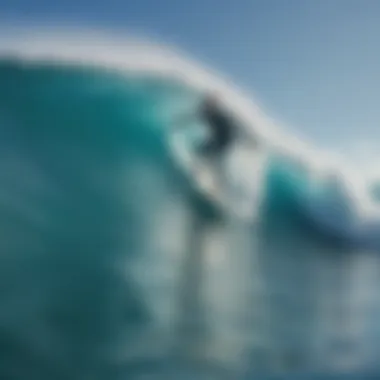
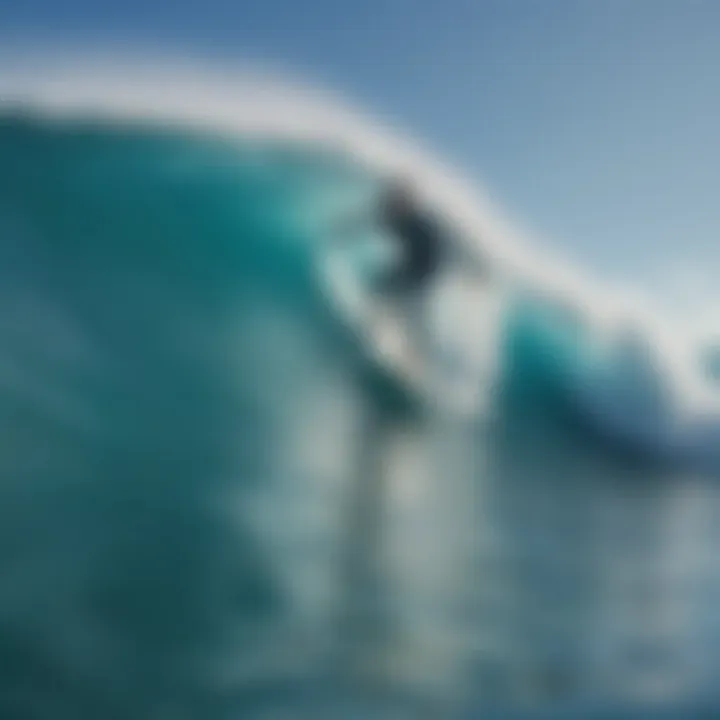
Namotu Island
Luxury Accommodations
For those looking to indulge a bit, Namotu Island is known for its luxury accommodations. Stunning villas and delightful resorts sit side by side, providing an exquisite blend of comfort and nature. This upscale environment often includes spa facilities, gourmet dining options, and personalized services. The combination can yield an unforgettable surf trip that balances action with relaxation.
Less Crowded Conditions
One of the significant draws of Namotu Island is the less crowded conditions prevalent throughout the year. Because it sees fewer visitors compared to other spots, surfers often have the chance to ride waves in a more serene setting. This ambiance allows individuals to hone their skills without pressure, making it a favored place for reflection post-surf.
Unique Surf Features
The unique surf features of Namotu Island, like its distinct reef breaks, create an alluring atmosphere. The conditions here can vary, often catering to different skill levels, thereby attracting a diverse surf community. Such variety means every surf session can yield something unique, leaving surfers excited to return. Investing time on Namotu Island could mean experiencing some of the best waves the Maldives has to offer.
Planning Your Surf Trip
When it comes to surfing in the Maldives, planning your trip thoughtfully makes all the difference. The beauty of this archipelago lies not only in its stunning landscapes but also in the variety of waves and conditions it offers. Knowing how to approach your trip allows you to maximize your surf experience while also immersing yourself in the local culture. Factors such as timing, logistics, and accommodations are crucial in making your surfing adventure both enjoyable and efficient.
Choosing the Right Time to Go
Timing can often be the deciding factor in your surfing experience. The Maldives has a wet and dry season, which influences wave quality and sea conditions. Generally, the dry season, from November to April, promises more reliable swells and cleaner waves. Surfing during this time means fewer crowds at various spots, allowing you to catch the waves you want without elbowing your way through throngs of other surfers. It’s not just a matter of avoiding the rain; it’s about seizing the moment in a place that changes with the seasons.
Travel Logistics
Flights
Finding flights to the Maldives is fairly straightforward, with numerous international airlines flying into Velana International Airport. Most travelers come from places like Dubai, Doha, or Singapore, making connecting flights a common part of the journey. The advantage here? A broad selection of flight times and options gives travelers flexibility with booking. However, it's vital to check for the best deals in advance since prices can fluctuate dramatically during peak surfing seasons.
Transfers
Once you've landed, the next step is making your way to your surf destination. Transfers from the airport can vary—speedboats, seaplanes, or even local ferries. Speedboats are often the most popular choice; they provide a fast and thrilling ride straight to your destination, taking about 30 minutes to destination like Thulusdhoo Island. However, there can be a price hike associated with speedboat transfers compared to local ferries, which, while much cheaper, might take a considerable amount longer—think hours instead of minutes.
Local Transportation
When already in the Maldives, local transportation can be something of an adventure in itself. Many islands are small enough to explore on foot or by bicycle, making it easier to discover hidden surf spots. However, for longer distances, local dhonis, or traditional boats, serve as a means of travel. While sailing between islands can offer unmatched views, it’s crucial to align your travel plans with the local schedules to avoid long waits—some ferries only run a few times a day.
Accommodations and Surf Camps
Resorts vs. Guesthouses
Choosing where to stay often boils down to personal preference and budget. Resorts in the Maldives tend to offer luxurious amenities and often operate their own surf programs. They provide a polished experience, from the meals to the accommodations. However, the price tag can be high. On the other hand, guesthouses offer a more intimate experience, often run by locals. This not only supports the community but also gives surfers a taste of the culture. Guesthouses offer budget-friendly accommodation, often with shared facilities, fostering a sense of camaraderie among guests. It's having a home base that feels like home.
Features to Look For
Whether you opt for a guesthouse or a resort, certain features can enhance your surfing trip. Consider accommodations that offer storage for surfboards, access to kitchens, or booking options for surf instructors. Wi-Fi is a bonus for checking surf reports, while being near surf breaks helps in catching those early morning waves without much hassle.
Booking Tips
Booking your trip can be simplified with a bit of foresight. Websites dedicated to surf camps often provide special rates during the off-peak season or package deals that include accommodation, food, and guided surf tours. Moreover, contacting hotels or guesthouses directly can yield better rates or perks.
"The essence of a surfing trip lies not just in the waves but in how you experience the whole journey—each decision leading to the next wave you ride."
In summary, careful planning intertwines with the arts of surfing and ensures that every aspect—from the moment you step on the plane to the moment you hit the waves—feels seamless. Knowing when and where to travel, choosing the right modes of transport, and making informed accommodation decisions will not only enhance your surf experience but also deepen your connection to this tropical paradise.
Cultural Aspects of Surfing in the Maldives
Surfing is not just a sport in the Maldives; it’s a way of life for many. The cultural aspect surrounding it adds a depth that often gets overlooked but is crucial for any surfer looking to immerse themselves fully in the experience. The interweaving of surfing and local heritage creates a unique atmosphere that enhances the overall joy of riding the waves. As surfers set out to catch their dream waves, they also tap into the vibrant local culture, which offers both lessons and life experiences.
Local Surf Culture
The local surf culture in the Maldives offers a rich tapestry of stories, traditions, and communal ties that pull in enthusiasts from across the globe. Waves, to many here, are sacred. Anglers, fishermen, and surfers coexist, celebrating the ocean’s bounty while respecting its power. Tournaments and community events often occur on different islands, drawing both locals and visiting surfers together, all with a shared passion for the ocean. This creates bonds that go beyond surfing, allowing visitors a glimpse into the lives of the Maldivians.
In addition to communal events, local terminology and lingo fill the air when surfers gather. Terms specific to the local breaks and techniques can often be heard, giving rise to a local dialect that is as much a part of the experience as the waves themselves.
Moreover, storytelling is a significant component of this culture. Surfers recount tales of thrilling rides and the beauties of various breaks, with seasoned surfers passing on knowledge to inexperienced riders. This communication enriches the culture, fostering skills, safety insights, and respect for the ocean.
Respecting the Environment and Communities
Surfers in the Maldives have a responsibility. With the growing popularity of surfing, environmental sustainability becomes ever more important. Every rider should take the time to understand the delicate ecosystems that coexist with their beloved surf spots.
The Maldivian waters house diverse marine life that can be easily disrupted by careless surfing practices. Many surf schools and camps prioritize educating surfers about the importance of marine conservation. Here are some steps to respect both the environment and local communities:
- Choose eco-friendly surfboards and equipment to minimize the carbon footprint.
- Be mindful of local customs by learning and adhering to etiquette when surfing in shared spaces.
- Participate in beach clean-ups organized by local surf clubs, ensuring the stunning beaches remain pristine.
- Support local businesses, like small guesthouses and surf shops, to foster positive relationships with the community.
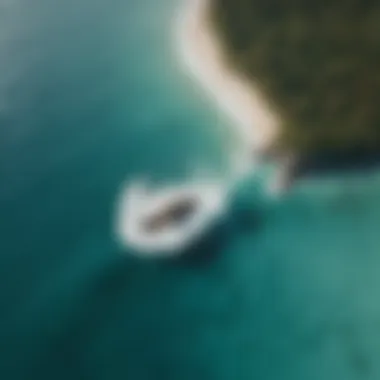
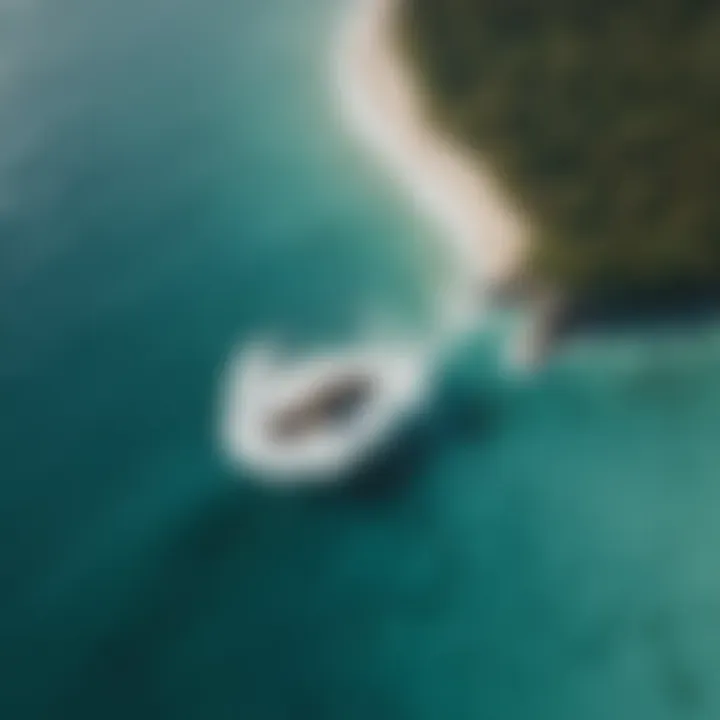
"The ocean is a generous teacher, but we must learn to listen, not only to its waves but also to the communities and environments that surround it." - Local Surfer
For any serious surfer, embracing these cultural aspects not only enhances your experience but also enriches the lives of those living in this beautiful archipelago. With every wave ridden, there's an opportunity to contribute to a symbiotic relationship between surfers and the serene Maldives.
Skills and Techniques for Surfers
Surfing isn't just about catching waves; it’s an art that combines physical skill with mental agility. Mastering the necessary skills and techniques elevates the experience, enabling surfers, whether novice or seasoned, to enjoy the Maldivian waves to their fullest. Essentially, it’s about blending the right technique with situational awareness, ensuring that each ride is not only thrilling but also safe. These skills can make a significant difference, particularly in a unique environment like the Maldives, where conditions can change from one moment to the next.
Essential Surfing Techniques
Paddling Strategies
Paddling is the foundation of surfing; without solid paddling techniques, you can forget about catching the perfect wave. The primary aspect of paddling strategies lies in efficiency. When you take to the water, knowing how to conserve energy while maximizing momentum is crucial. One key characteristic of effective paddling is the way you position your body on the board. Your torso needs to be low, and your feet should hang off the tail slightly. This stance not only minimizes drag but also keeps your board buoyant.
A popular choice for paddling techniques is the "one-two stroke method," where you alternate arm strokes with a strong kick of your leg. This combination maintains speed and stability in choppy waters. A unique feature here is that it allows for quick adjustments, keeping you poised for the next wave. However, a downside could be that it requires a bit of practice to perfect. Regardless, strong paddling skills form the backbone of successful surfing in the Maldives.
Positioning on the Board
Positioning plays a vital role in how you ride the waves. Proper board positioning helps you balance more than anything else. A common practice is to sit centered on the board, with your chest slightly lifted to maintain balance. This positioning is crucial as it gives you control over your movements when you are up on the wave.
A unique aspect of positioning is the importance of timing; you need to align your center of gravity with the wave’s energy. This can be tricky in a place like the Maldives, where waves can have various shapes and speeds. The advantage of mastering positioning is that it significantly reduces the chance of wipeouts. Nevertheless, it can be easier said than done, especially for beginners.
Safety Measures
When you’re riding the waves in paradise, safety shouldn't take a backseat. Knowing how to navigate the waters ensures that your surfing adventure remains an enjoyable one. Awareness of the ocean dynamics and having the right safety measures is crucial, especially when it comes to rip tides and equipment use.
Understanding Rip Tides
Rip tides can be a hidden danger for many surfers, particularly in the dynamic waters of the Maldives. This specific aspect of surfing safety is about understanding how rip currents form and how to escape them. A significant characteristic of these currents is that they can catch even seasoned surfers off guard. They typically flow away from shore and can develop quickly with changing tides.
Being knowledgeable about how rip tides work can save lives. A beneficial approach is to learn how to read the water; certain indicators like foamy water can signify the presence of a rip current. However, if caught in a rip tide, the advice is to swim parallel to the shore rather than against the current. Understanding rip tides not only enhances safety but also allows surfers to enjoy the water mindfully.
Using Leashes Effectively
A leash is more than just a piece of gear; it's your safety tether to your board. The ability to use leashes effectively means you have a better handle on managing your board, especially when riding in crowded spots like the Maldives. One crucial characteristic of using a leash is attachment; it should fit snugly around your ankle, allowing free movement while ensuring your board stays close.
The unique feature of a leash is that it prevents accidents caused by loose boards, which can pose hazards to other surfers. An advantage here is that it allows you the freedom to tumble off without the worry of your board floating away, reducing the chaos in the water. Yet, the downside is that they can break, necessitating checks before you head out.
"Mastering paddling, positioning, and safety transforms your surfing experience in the Maldives from a simple thrill to an art form."
Ultimately, developing these skills and techniques not only enhances surfing but also enriches one’s overall appreciation for the sport. As you navigate the unique waters of the Maldives, being equipped with the right knowledge makes a world of difference.
Environmental Considerations
Understanding the environmental considerations when surfing in the Maldives is essential for both enjoyment and preservation of this pristine paradise. The islands boast rich marine ecosystems that are vital—not just for surfing enthusiasts but for the planet. Surfers have a unique opportunity to connect directly with nature. Yet, such connections come with responsibilities that are often overlooked.
Surfing, as exhilarating as it is, can impact marine life and the delicate balance of the ecosystem. The way surfers engage with their environment can determine the sustainability of these stunning surf spots. Being mindful of one’s actions can bring about numerous benefits, both for the local flora and fauna and the surfing community.
Impact of Surfing on Marine Life
When we dive into the waters of the Maldives to catch the perfect wave, we must recognize our surroundings. The coral reefs that line the islands are not just beautiful; they are crucial habitats for fish and other marine organisms. Surfers should keep in mind several factors:
- Coral Damage: Heavy surfboards can cause significant wear on coral reefs. It’s vital to avoid standing on or paddling over sensitive reef areas to minimize disruption.
- Waste Management: Litter and waste from surfers can contaminate the ocean. It’s crucial to pack out what you bring in. Bringing reusable containers can help in reducing single-use plastics.
- Wildlife Disturbance: Wildlife might be startled by loud noises and human presence. Keeping a respectful distance allows marine life to thrive and enjoy their natural behaviors.
Recognizing these effects allows surfers to play a role in safeguarding the environment. When visiting spots like Maloku Atoll or Sultans, maintaining awareness contributes positively to the ecosystem.
Sustainable Surf Practices
To ensure that the breathtaking surf spots of the Maldives remain intact for future generations, adopting sustainable surf practices is paramount. Implementing a few mindful strategies can go a long way:
- Choose Eco-Friendly Gear: Opt for surfboards made from sustainable materials. Many companies now offer eco-friendly options, reducing your carbon footprint and protecting the environment.
- Participate in Cleanup Events: Many local surf organizations hold beach cleanup activities. Joining these initiatives not only helps the environment but also fosters a sense of community and responsibility among surfers.
- Educate Others: Sharing knowledge about marine conservation and responsible surfing can help raise awareness. Encourage fellow surfers to adopt similar sustainable practices.
- Support Local Initiatives: Some surf camps and resorts in the Maldives focus on sustainability and conservation efforts. Staying at these establishments can contribute positively to the environment while also providing a unique surfing experience.
Incorporating these sustainable practices into your surfing routine not only enhances personal satisfaction but also ensures the preservation of the very waves we cherish. By being conscious of our impact and making small adjustments, surfers can help protect the marine ecosystems and ensure that these beautiful surf spots continue to be enjoyed for years to come.
"The sea, once it casts its spell, holds one in its net of wonder forever." - Jacques Cousteau
Culmination
Reflecting on the journey through the Maldives' surf spots, one realizes just how integral this aquatic paradise is to both the sport of surfing and to those who partake in it. This article has traversed through the intricate details of the various locations and provided insight into the essential nature of not only catching the waves but also savoring the rich local culture. Here, the emphasis lies on the all-encompassing experience, urging surfers to dive deeper into the landscape and the surrounding communities.
Reflecting on the Surf Experience
Surfing in the Maldives is not merely about the thrill of slicing through crystal-clear water; it's an engagement with nature that heightens one’s senses. Each wave carries its own story, and as surfers ride them, they etch memories that often linger far longer than the stormy pursuit. The warm sun beating down, the salty breeze kissing the skin, and the rhythm of the ocean beneath—this symphony of sensory experiences makes for a profound connection with one's sport.
Surfers will find that embodying the spirit of the Maldives can profoundly influence their approach to the sport. Reflecting on personal growth while riding the undulating waves often leads to insights about patience, balance, and respect for nature. The serendipitous encounters with fellow surfers and local communities also deepen one’s understanding of the surfing culture that thrives here. Sharing waves, tales, and experiences fosters bonds that resonate long after surfboards are packed away. In essence, the Maldives offers an ethereal backdrop where every surf session is a meditative experience, igniting a passion that transcends the waves.
Future of Surfing in the Maldives
As we gaze into the horizon, the future of surfing in the Maldives seems bright, yet it's bound by responsibility. With its increasing popularity, there arises a necessity to balance tourism and the preservation of delicate ecosystems. Moves towards sustainable surfing practices are gaining traction, encouraging athletes and enthusiasts to become custodians of this oceanic haven. From initiatives to protect coral reefs to fostering community engagement programs, there is a palpable movement aiming to maintain the ecological integrity of the area.
Moreover, the advent of surf schools and camps, like those on Thulusdhoo Island, signals a commitment to bringing a new generation of surfers into the fold. The influx of passionate instructors speaks volumes about the thriving interest in surf education, ensuring that respect for the ocean is passed down along with the techniques of riding it. Local governments and organizations are also recognizing the value of surfing as an economic activity that supports local communities while preserving their culture. Thus, as the waves continue to roll in, the spirit of surfing in the Maldives remains ever-evolving, rooted in tradition yet poised to embrace the future with open arms.















